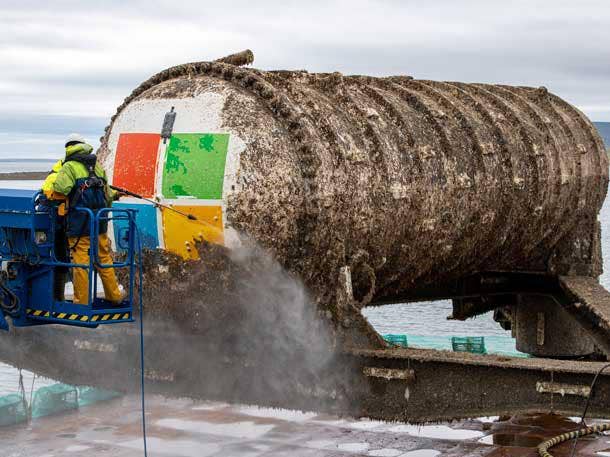Microsoft’s Underwater Data Center A Success; Azure Ahead
Microsoft recently pulled its underwater data center from the seabed floor, discovering that the 864 servers inside were eight times more reliable than those on land.

After two years of being submerged under more than 100 feet of water, Microsoft has pulled its container-size data center from the bottom of the North Sea, discovering that servers in its underwater data center were eight times more reliable than those on land.
The goal of Microsoft’s Project Natick was to test and monitor the performance, reliability and failover of the purpose-built underwater data center, dubbed the Northern Isles. The underwater data center contained 12 racks, 864 servers with FPGA acceleration and 27.5 petabytes of storage. It was sent 117 feet into the sea off Scotland’s Orkney Islands in spring 2018.
The result was a success as the servers in the underwater data center showed a failure rate of one-eighth that of land-based data centers, according to Microsoft.
The proven reliability of the Northern Isles has prompted Microsoft to look into leveraging underwater data centers to power the full suite of Microsoft Azure cloud services.
[Related: 14 Top Azure Announcements From Microsoft Ignite 2020]
“As we are moving from generic cloud computing to cloud and edge computing, we are seeing more and more need to have smaller data centers located closer to customers instead of these large warehouse data centers out in the middle of nowhere,” said Spencer Fowers, a principal member of the technical staff for Microsoft’s Special Projects research group, in a statement.
The company is looking to eliminate any data latency by placing underwater data centers near coastal cities. In addition, an underwater data center could better secure data, which Microsoft says is a core mission of Azure.
“The fact that they were very quickly able to deploy it and it has worked as long as it has and it has the level of encryption on the signals going to it combine to tell a pretty compelling vision of the future,” said William Chappell, vice president of mission systems for Azure, in a statement. “To learn how to make data centers reliable enough not to need human touch is a dream of ours.”
Initial analysis suggested that the successful failure rate of the underwater data center was due to the static, dry nitrogen environment versus land-based centers with oxygen, humidity, temperature fluctuations as well as with bumps and jostles from human interactions.
The underwater data center was designed with cooling systems and renewable electricity from on-shore wind and solar as well as off-shore tides and waves.
Microsoft is on a journey to become carbon-negative by 2030 through advancing the efficiency and sustainability of its cloud infrastructure. The company has committed to use 100 percent renewable energy in all of its data centers by 2025.
The Redmond, Wash.-based software giant is one of the largest data center spenders in the world, building and equipping hyperscale data centers across the globe.
Spending on public cloud data center infrastructure jumped 25 percent year over year to nearly $17 billion in second-quarter 2020, according to data from Synergy Research Group, with Amazon Web Services, Microsoft and Google leading the way.